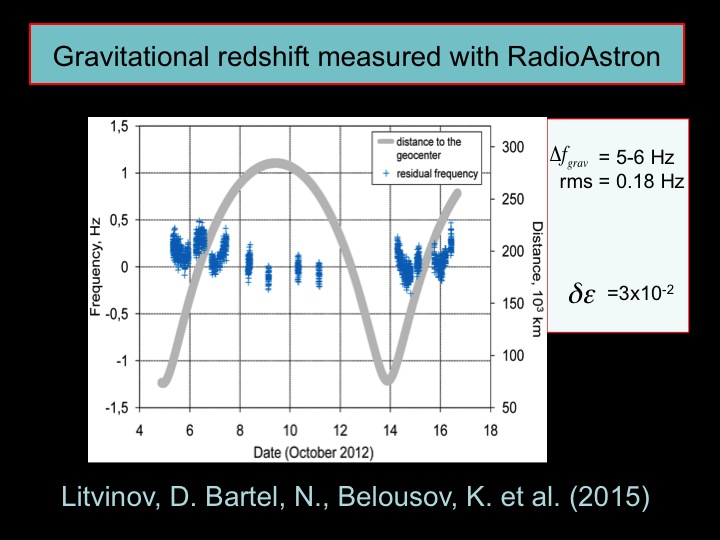

SLR data are required to characterize the orbital radial errors, which are highly correlated to clock errors in IGS orbit solutions. Since these spacecraft have atomic clocks with good stability, a test of the variation of the redshift can be performed and an accumulated relativistic effect can be determined over the long term. Due to technical problems with the launch, these satellites remain in an elliptical orbit, which is not useful for the Galileo operations.Īn elliptical orbit induces a periodic modulation of the gravitational redshift at the orbital frequency. The Galileo-201 and -202 satellites, the first two Fully Operational Capability (FOC) satellites, were launched on August 22, 2014. The unplanned eccentric orbit of Galileo-201 and -202 provides a unique opportunity to study the behavior of on-board clocks and the gravitational redshift predicted by General Relativity. 'Test of the Gravitational Redshift with Stable Clocks in Eccentric Orbits: Application to Galileo Satellites 5 and 6'.

PSL Research University /UPMC – Sorbonne Universités in France, both specialists inĭelva, P., A. SYRTE laboratory - Systèmes de Référence Temps-Espace – of CNRS / Paris Observatory –.ZARM Center of Applied Space Technology and Microgravity, at Bremen University in.Space Agency, led respectively by the following two institutions: This will require the best tracking coverage of the two Galileo satellites’ orbits in space and in time.įor the GREAT GR tests, two parallel research activities have been launched by the European In this context, the proposed dedicated Satellite Laser Ranging measurements should allow us to make significant progress in disentangling the desired red-shift signals from systematics due to the clock, orbital modeling, target signatures, and tracking system specific errors. However, good control of systematic effects will be essential to calculate robust limits on the parameters of the GR violation. It has been shown that assuming realistic noise and systematic effects, it should be possible to improve on the GP-A limit down to an uncertainty around (3−4)×10 −5 after one year of integration of Galileo-201 data 1. Their unintended elliptic orbits induce periodic modulation of the gravitational redshift, while their very good clocks stability allows us to measure this periodic modulation very accurately. The GREAT (Galileo gravitational Redshift test with Eccentric sATellites) experiment proposes to use the on-board atomic clocks on the Galileo-201 and -202 satellites to test the gravitational redshift. The best test to date was performed with the Gravity Probe A (GP-A) experiment in 1976 with an uncertainty of 1.4 × 10 −4. in attempts to unify GR and quantum theory – experimental constraints are of paramount importance. As several alternative theories of gravitation predict violations of this effect – e.g. It is therefore possible to test GR by comparing the frequencies of two clock, in a so-called gravitational redshift test. GREAT: Galileo gravitational Redshift test with EccentricĮinstein's Theory of General Relativity (GR) predicts that time flows differently for two clocks that have a relative speed and are placed in different gravitational potentials.


 0 kommentar(er)
0 kommentar(er)
